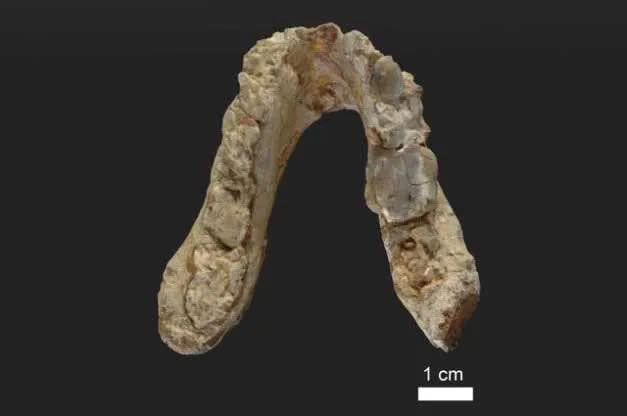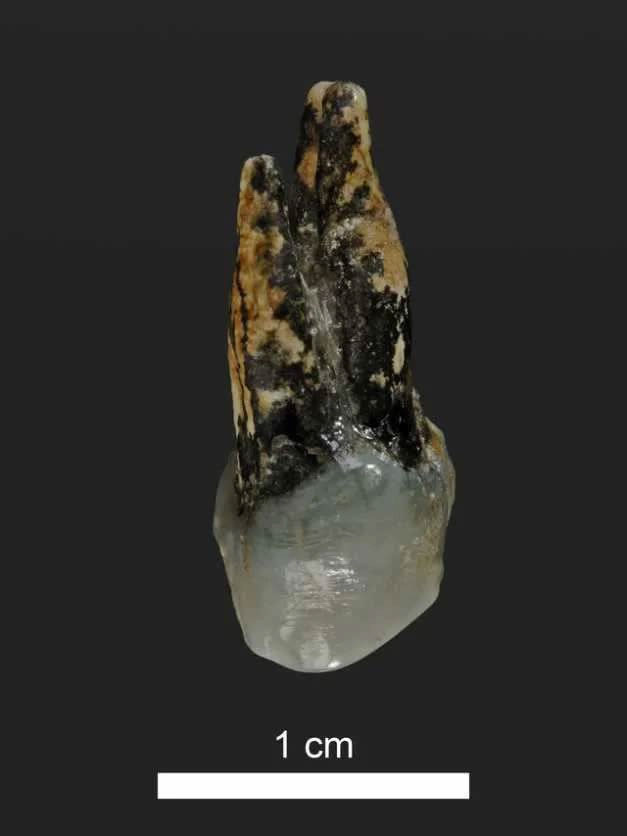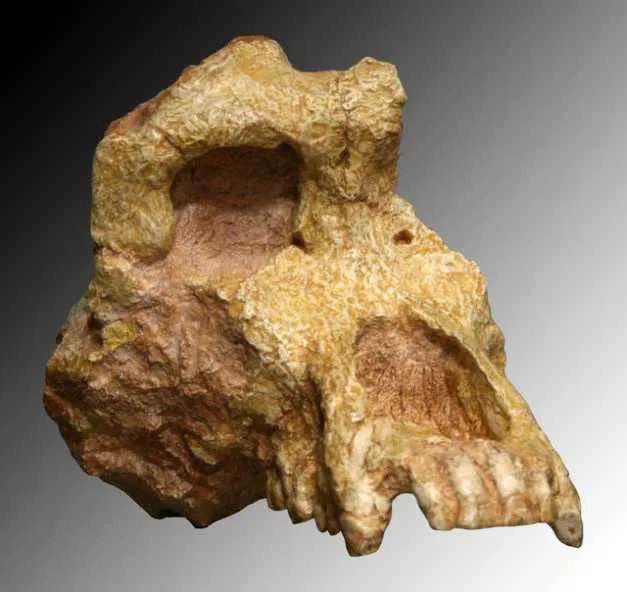Africa May Not Be the Sole Origin of Human Evolution
Humans appeared and evolved in the eastern Mediterranean region around 7.2 million years ago. This conclusion stems from new analyses of several hominid fossils, which experts have named “El Graeco.”
Accordingly, theories suggesting that humans first emerged in Africa have been contradicted. In 1944, an ancient jawbone was discovered in Pyrgos Vassilissis, Greece, but it did not receive much attention at the time.
However, interest in the fossil, as well as Pyrgos Vassilissis, a former royal estate in mainland Greece, has been growing following the announcement of an astonishing discovery by a group of international researchers.

A 7.2 million-year-old fossil belonging to prehistoric humans is prompting scientists to reconsider the possibility that the divergence of the human lineage occurred in the Eastern Mediterranean rather than in Africa as currently assumed.
Madelaine Böhme, project leader from the Senckenberg Center for Human Evolution and Palaeoenvironment and the University of Tübingen, along with co-author Nikolai Spassov from the Bulgarian Academy of Sciences and other colleagues, analyzed both the Pyrgos fossil and another premolar found in Azmaka, Bulgaria.
Spassov stated that El Graeco (Graecopithecus) is the oldest known hominid to date. It is several hundred thousand years older than the oldest hominid species found in Africa, Sahelanthropus, which was discovered in Chad and dates back 6 to 7 million years.
Anthropologists use the term hominid because the last common ancestor of humans and chimpanzees retained characteristics of both other primate species and humans.

The El Graeco fossil is the oldest known hominid to date.
Although El Graeco is only known from a fossil jaw and a small molar, the research team employed computed tomography technology to investigate how evolutionary traits developed into more human-like forms and how the roots of the molars were significantly reduced.
While larger primates typically have two or three distinct and separate root structures, the roots of the Graecopithecus hominid converge and partially fuse, a characteristic typical of modern humans, early humans, and some hominid species, including Ardipithecus and Australopithecus.
Professor David Begun, a co-author of the study, added: “This dating allows us to hypothesize that humans and chimpanzees diverged in the Mediterranean region.”
The researchers believe that significant environmental changes may have influenced the evolution of prehistoric humans.

Based on geological analyses of the sediments where the two fossil samples were found, researchers discovered that the Sahara Desert in North Africa emerged more than 7 million years ago. Professor Nikolai Spassov, who also participated in the research, stated: “We reconstructed a savanna, suitable for giraffes, antelopes, and rhinoceroses found alongside Graecopithecus.“
The researchers studied tiny fragments of charcoal and phytoliths from plants to reconstruct the climate of that period in the eastern Mediterranean and North Africa. “The phytoliths provide evidence of severe droughts occurring, and charcoal analysis indicates that periodic vegetation fires took place.”
In summary, scientists are currently reconstructing the habitats and animal species that were discovered alongside Graecopithecus. “Researchers have delved deeper into the salts, uranium, thorium, and lead isotopes found in dust particles from the Sahara Desert, often brought to the Mediterranean by storms.”
The dating of these elements and the analysis of their spread indicate that the Sahara Desert formed 7 to 8 million years ago.
Böhme stated: “The initial formation of a desert in North Africa, over 7 million years ago, and the spread of savannas in Southern Europe may have played a significant role in the separation of humans and chimpanzees.” Today, this theory is referred to as “The Northern Story”, reminiscent of a hypothesis proposed by anthropologist Yves Coppens, who discovered the “Lucy” fossil in Africa.

Analysis results indicate that the Graecopithecus fossils are dated at 7.24 and 7.175 million years—several hundred thousand years older than the prehistoric humans believed to be the oldest from Africa, Sahelanthropus, which appeared in Chad 6 to 7 million years ago.
Coppens’ theory, known as “The Eastern Story”, claims that hominids first evolved in the Great Rift in Kenya. Examining fossils found in Africa, Asia, and Europe shows that the first primate species originated from Asia over 40 million years ago. Some species then migrated to Africa and evolved.
Böhme explained: After many years of evolution, some species known as hominids returned to Europe and Asia around 14 million years ago. The researcher indicated that the ancestor of El Graeco was an Eurasian hominid, as well as Ouraanopithecus from Greece.


















































